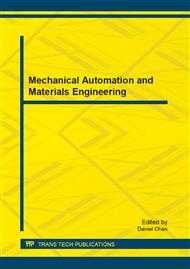p.650
p.655
p.660
p.664
p.669
p.674
p.679
p.687
p.692
Pressure Adaptive Feeding System Based on Piston Extrusion
Abstract:
Additive manufacturing (AM) with high flexibility are widely used in tissue engineering to produce customized designs with good controllability of scaffold materials and structures. Paper develops a pressure adaptive feeding system based on piston extrusion to form hydrogel scaffolds and discusses the extrusion process. The experiments show that, pressure adaptive feeding system based on piston extrusion can precisely form scaffolds for tissue engineering, and the flux has been well controlled, the over-accumulation on deposition path at the end has been eliminated, which lead to effective guarantee of scaffold forming quality.
Info:
Periodical:
Pages:
669-673
Citation:
Online since:
August 2013
Authors:
Keywords:
Price:
Сopyright:
© 2013 Trans Tech Publications Ltd. All Rights Reserved
Share:
Citation:


